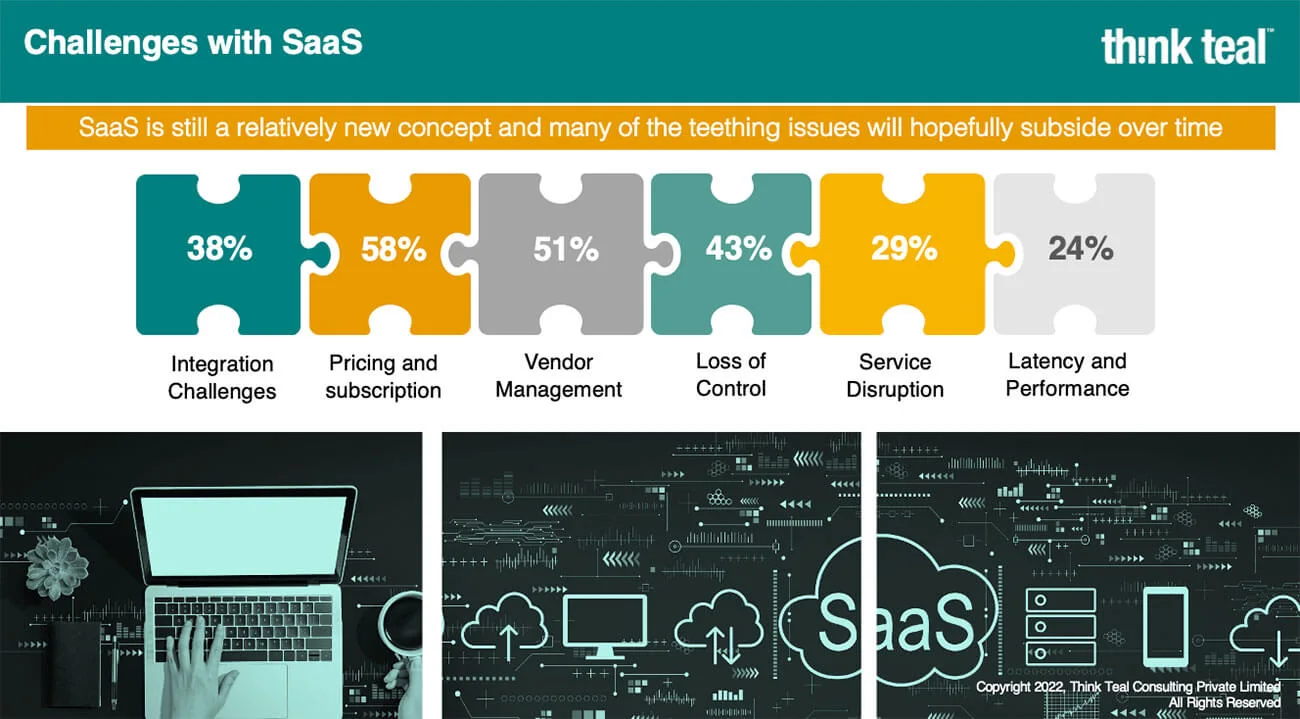Challenges with SaaS
Within the cloud eco-system, SaaS is the biggest revenue generator followed by IaaS and PaaS. There is a strong push from all software publishers to sell via SaaS vis a vis perpetual licensing model. And the model has worked well both for vendors and users. For vendors, it has allowed them to expand their reach cutting across large, mid-sized and small companies. It also helps them get a steady revenue stream from a large base of customers which helps them work on product updates and pass it on to their customers.
The benefits to enterprises are also well documented. After all, SaaS has been a runaway success because it was a win-win for both the stakeholders.
But like any piece of technology, there are challenges associated with managing SaaS applications. While most enterprise decisions are taken with a lot of due diligence, it is not possible at times to foresee some of these challenges. In fact, in certain cases, even if an organization does, they are left with no choice but to go with particular software for a lack of alternatives.
But to be fair, in spite of its dream run, SaaS is still a relatively new concept and many of the teething issues will hopefully subside over time.
In addition to the challenges mentioned, another issue that many large organizations face is Shadow IT, a phenomenon where employees end up buying SaaS services without the knowledge of their IT team. This can lead to inefficient processes and a challenge in managing software assets. Solutions like SAM (Software Asset Management) can help keep a tab on such scenarios helping them manage their software footprint regardless of where it resides, i.e. on-premise or on the cloud.


